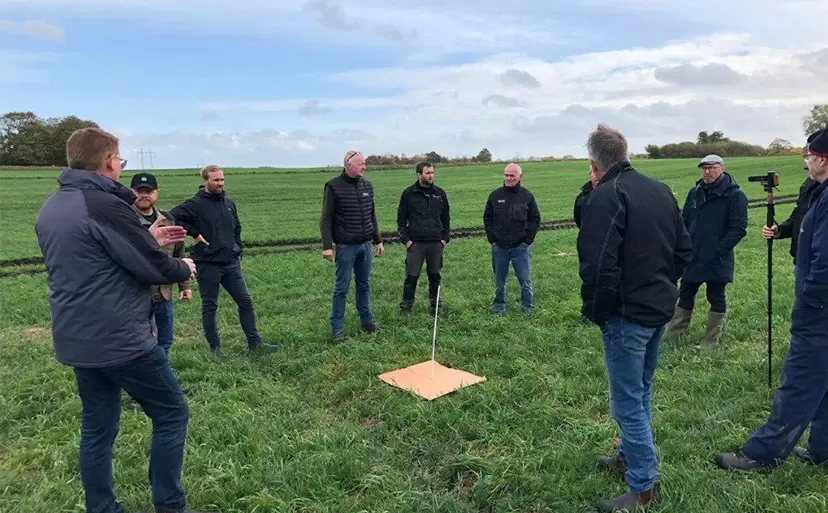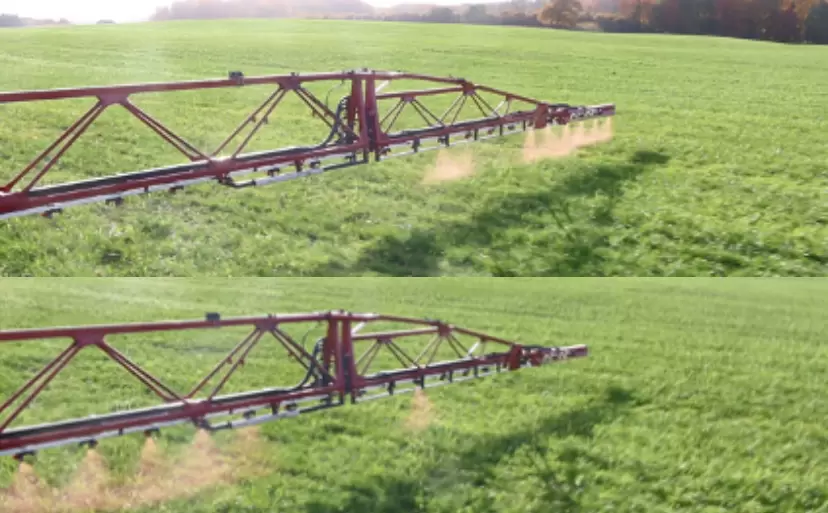HARDI demonstrates successful spot spraying
HARDI has shown that spot spraying with a NAVIGATOR 4000 i with single nozzle on/off is effective at treating unwanted grasses – and only them – in a tall fescue grass field.
The field trials were requested by a Danish peer-to-peer group (Erfa group) attached to the Danish Environmental Protection Agency’s Partnership for Precision Spraying. The group wanted to learn about spot spraying in a high value crop such as grass seeds with the objective to achieve a cleaner end product.

The participants consider the parcel of 1x1 m after the sprayer has passed, selectively spraying it with red colourant without treating the surrounding area
Before the trials, the field of tall fescue was overflown by a drone carrying a camera in order to identify areas containing unwanted grass species.
The trials were carried out on 27-28 October 2020 at Nørager Estate on West Zealand, Denmark. Other attendants included Danish Technological Institute and DLF Seeds and Science.
The trials were carried out to examine two challenges:
1. Is a sprayer with single nozzle on/off capable of spraying a GPS-located parcel of 1x1 m?
2. Can spraying be limited to areas with foreign grass seeds only, in this case reducing it to about 35% of the total field area?
Both challenges were solved by the NAVIGATOR i sprayer – reducing spraying by 65%.

Individual nozzles on the boom only open a split second over the unwanted grass species.
In this field trial, spot spraying was expected to limit spraying by 35% of the total field area, and the Navigator 4000 i did just that.
Real benefits to the farmer
Spot spraying of specific areas in a field has fantastic prospects, irrespective of whether the weeds are identified by drone, satellite or boom cameras on the sprayer. Exact treatment assisted by GPS signal can improve crop quality, farm operations and economy as well as reduce consumption of plant protection products.